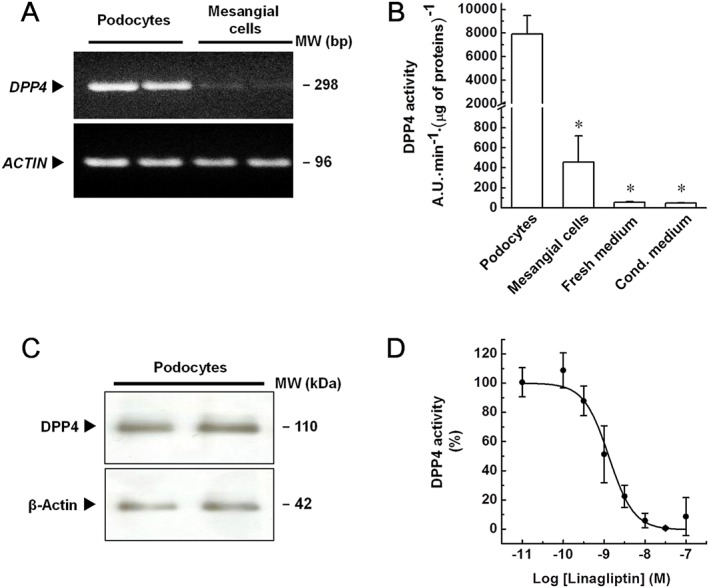Figure 1.

Expression and activity of DPP4 in immortalized human podocytes and mesangial cells. (A) Expression of the gene encoding for DPP4 was evaluated in immortalized human podocytes and mesangial cells by RT‐PCR analyses. Actin (ACTIN) was adopted as an internal standard to control for unwanted sources of variation. Image is representative of five experiments run in duplicate for each experimental group. (B) Activity of DPP4 in cell extracts, fresh and podocyte‐conditioned (5 days) media was evaluated by measuring the rate of increase in fluorescence intensity, expressed as arbitrary units (A.U.)·min−1 and normalized to protein content. Data are expressed as mean ± SEM of five experiments run in duplicate for each experimental group. (C) Expression of DPP4 in immortalized human podocytes was evaluated by western blot analyses. β‐Actin was adopted as an internal standard to control for unwanted sources of variation. Image is representative of five experiments run in duplicate for each experimental group. (D) Effects of increasing linagliptin concentrations on the enzymatic activity measured in immortalized human podocytes. Activity of DPP4 was measured in cell extracts treated with either vehicle alone (control) or increasing linagliptin concentrations (0.01–100 nM), as above described. To set the Y axis, all data were normalized to the mean value of the control group (100%). Data are expressed as mean ± SEM of five experiments run in duplicate for each experimental group. * P < 0.05 versus podocytes.
